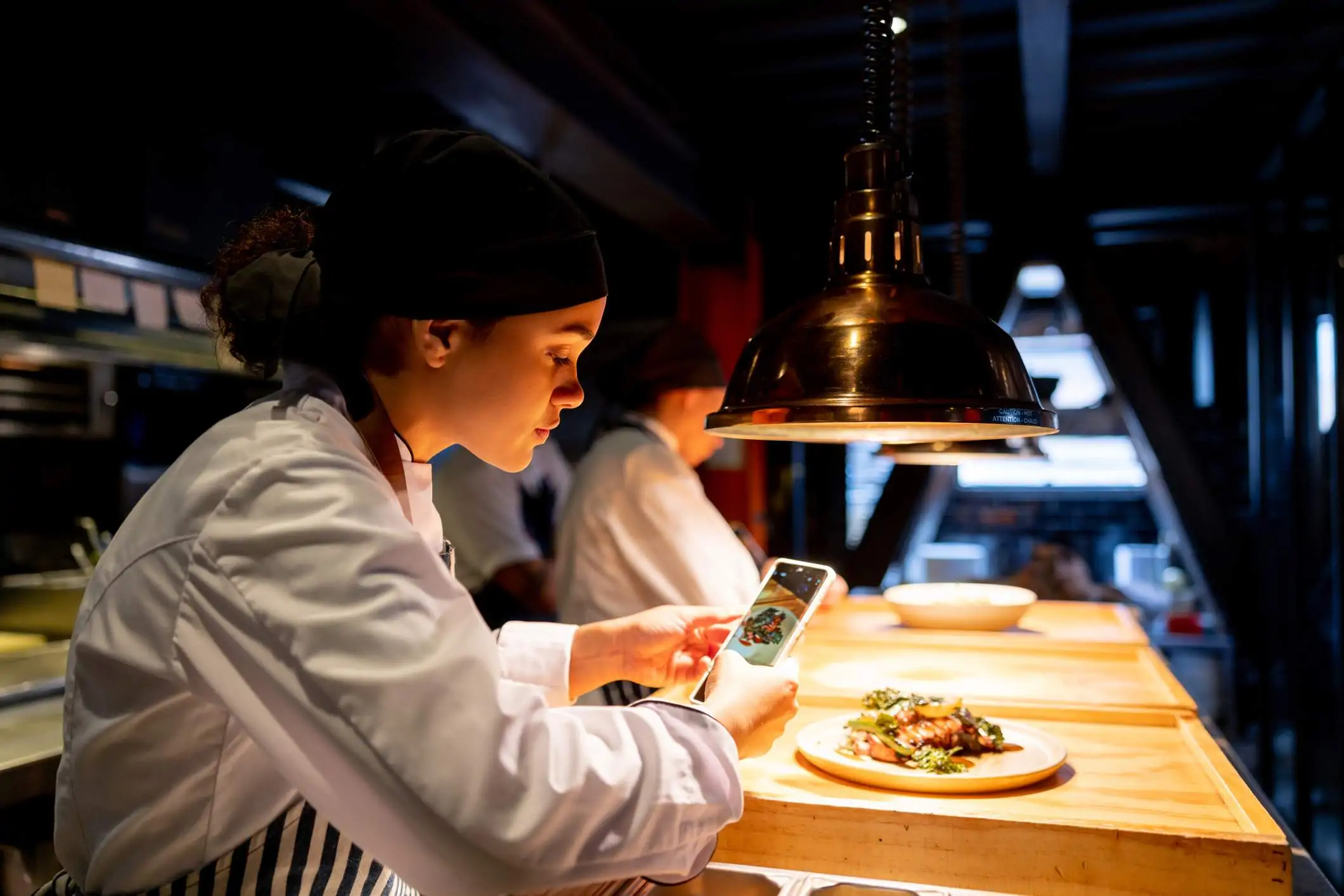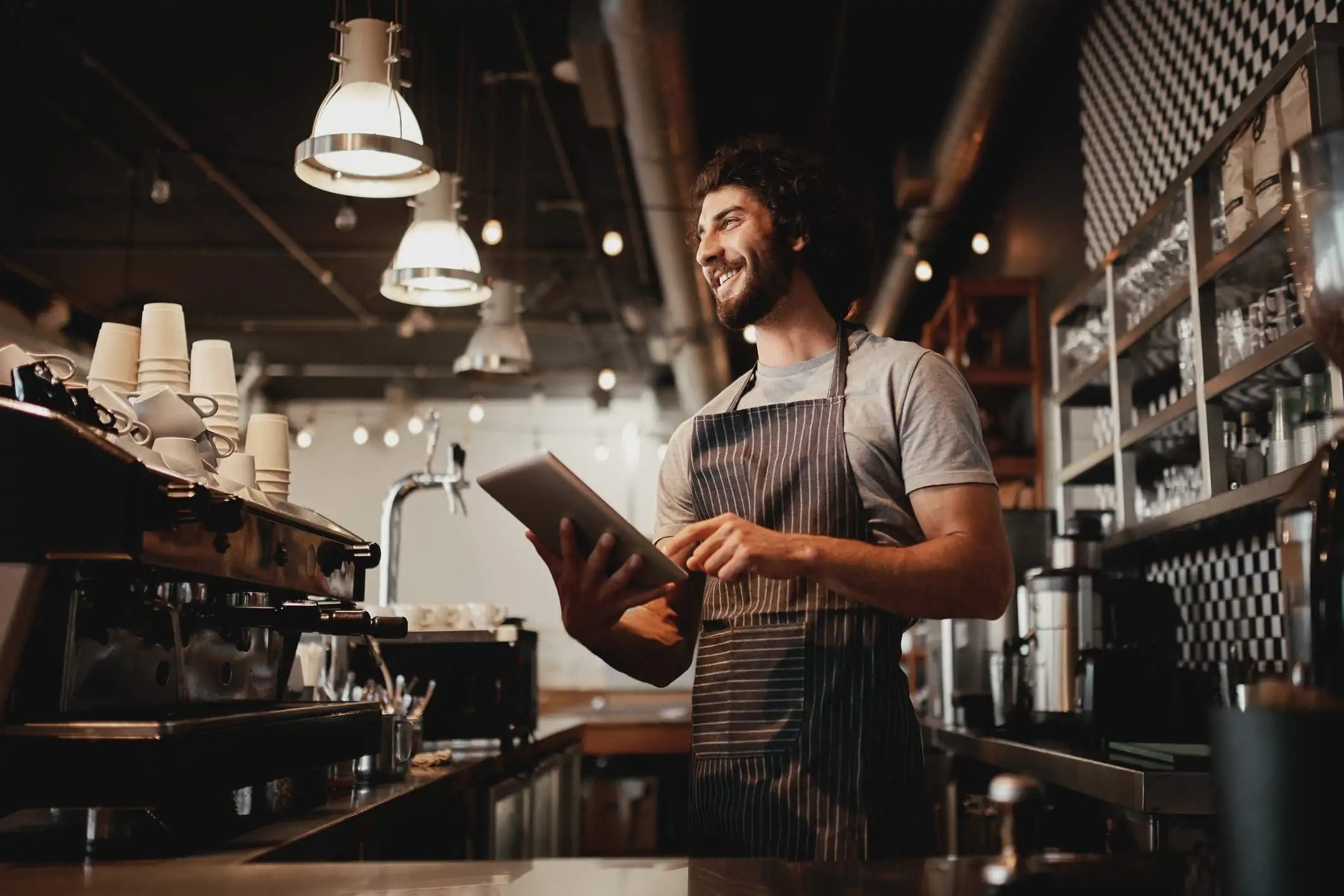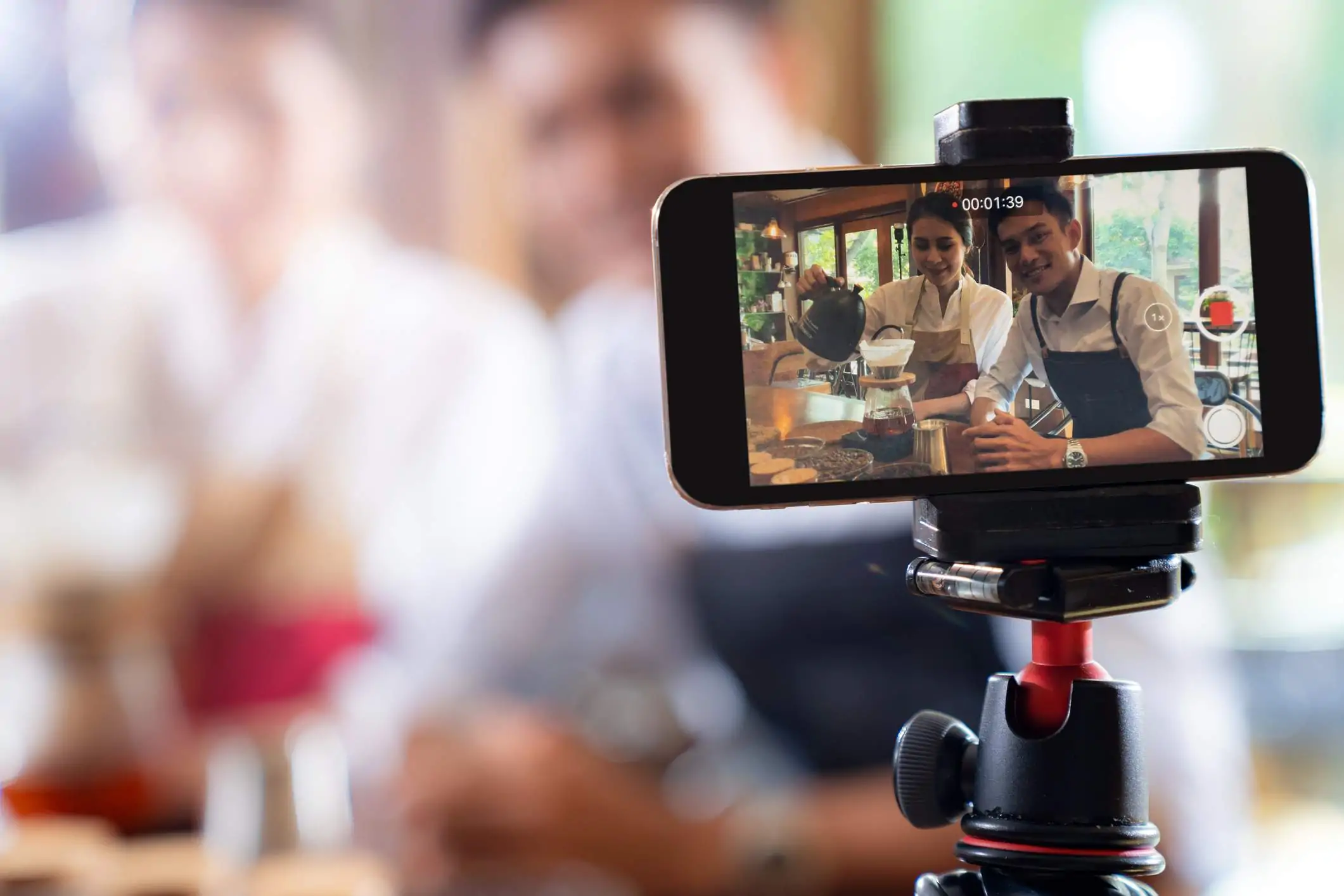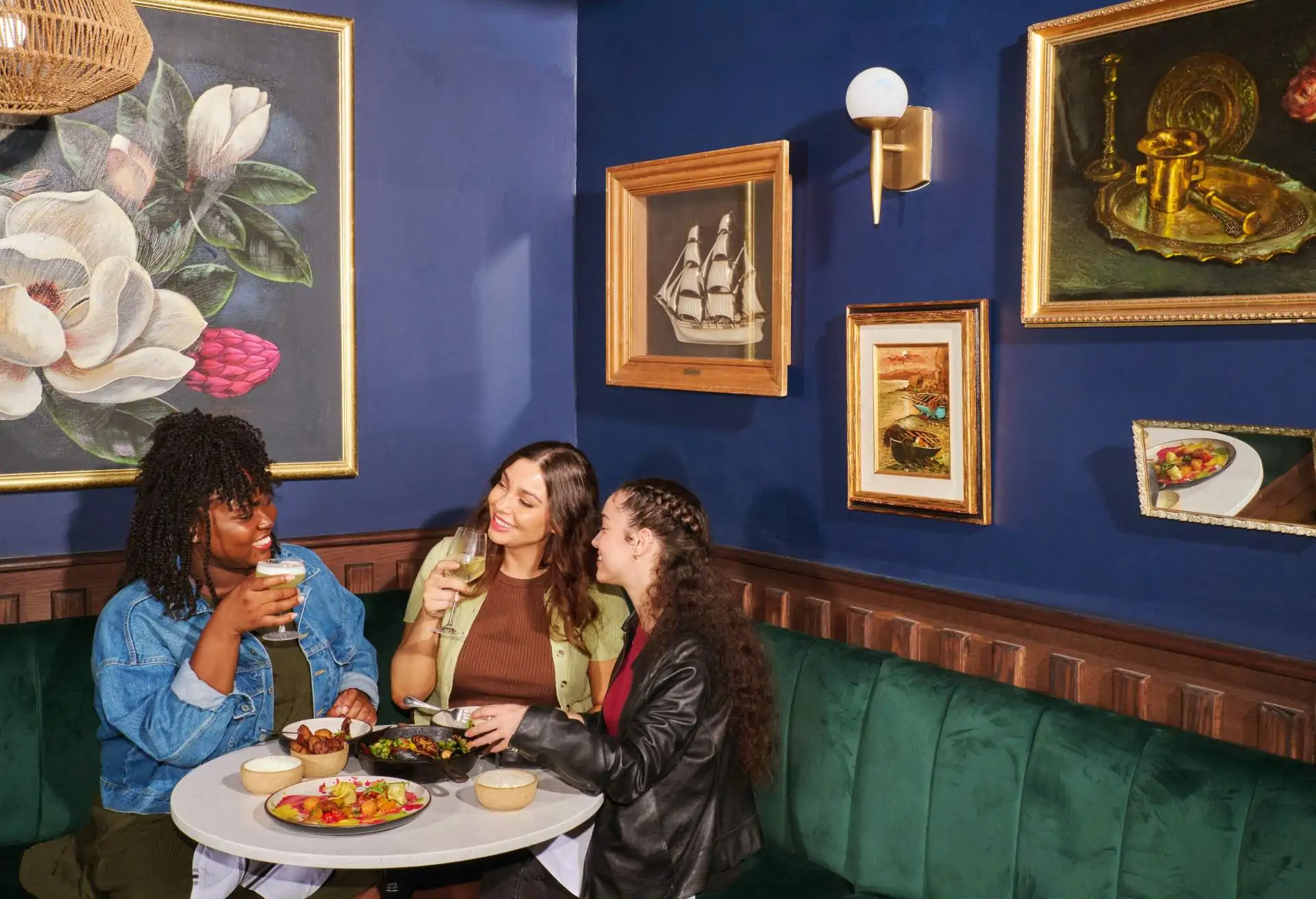Running a great restaurant means nothing if nobody knows about it. That’s where restaurant marketing comes in, which helps attract new diners through the door. But it’s more than that; with effective marketing, you can turn one-timers into regulars while setting your place apart from the crowd. From social media that hits all the right notes to loyalty programs that work, we’ve packed everything you need into this complete guide to restaurant marketing.
Quick links
What is restaurant marketing?
Why is restaurant marketing so important?
How to develop a restaurant marketing plan
What is the right restaurant marketing budget?
How to build a strong restaurant brand
How to optimize your website for SEO
How to use social media for restaurant marketing
How to use paid advertising for restaurant marketing
How to use email marketing
How to use mobile marketing for restaurants
How to use local marketing for restaurants
How to use video for restaurant marketing
Using AI for restaurant marketing
OpenTable for restaurant marketing
What is restaurant marketing?
Nobody expects an owner, chef, or sommelier to be a skilled marketer, and most restaurants can be forgiven if they lack expertise in this part of the job. But it goes without saying that marketing—especially when done right—is what gets eyes on your spot.
Let’s start with the basics. Restaurant marketing refers to the strategies and tactics that restaurant owners use to promote their business and attract guests. There are a lot of restaurants, and effective marketing is a key driver of growth. Without it, who knows? Something might pop for your restaurant, but you’re running a risky game.
More than one way to market a restaurant
There are tons of types of restaurant marketing these days. You’ve got the traditional ways, like advertising methods in the form of signs and billboards as well as print and radio ads.
Then there are the newer ways. Well, newish. Think digital marketing like social media, email marketing, and search engine optimization (SEO). Then there’s the quest to land media coverage on TV, in print, and online, also known as “earned media,” which is eternal.
The good news is that you don’t have to do every kind of marketing under the sun to get more covers. The secret ingredient of successful restaurant marketing is picking the strategies that work best for your specific restaurant, guests, and goals.

Why is restaurant marketing so important?
Restaurant marketing is essential for success, that much we’ve gathered. This is just as true for independent mom-and-pop restaurants as it is for large chains. The restaurant industry has been evolving at warp speed and so have the wants and needs of guests.
Therefore, you need a thoughtfully planned and expertly executed marketing strategy to magnetize the right people. Regularly brainstorming restaurant marketing ideas should be built into your workflow.
Not only does marketing put butts in seats directly, but it also builds your brand identity and reputation as you continually get the message about your restaurant out there over time. Through marketing, people can get to know you, your menu, the kinds of events you host, and even your team before they ever step foot in the restaurant.
Social media platforms, an OpenTable profile page, email marketing, and paid advertising can all be used to entice potential guests through the door and drive traffic to the restaurant’s online presence.
But even when guests aren’t dining with you, marketing helps you stay top of mind between visits, driving repeat visits and creating loyal customers. By staying in touch with guests via their inboxes, through social media posts, and elsewhere online, restaurants nurture relationships that keep their brand relevant.
How has restaurant marketing changed over the years?
Pre-Internet, old-fashioned marketing methods such as print ads, radio ads, direct mail, and billboards were the best ways for restaurants to promote themselves. The rise of social media has completely remade this marketing landscape. And now we’re contending with another shift in the form of AI.
There’s a staggering variety of digital marketing tools at your disposal: Instagram, Facebook, TikTok, Snapchat, YouTube, email, Google ads, blogs, LLMs, and local efforts to name a few. These tools let restaurants target guests in amazingly specific and effective ways.
All this tech has also made it easier for restaurants to collect data about guest preferences and behavior, allowing them to create highly personalized marketing campaigns and tailor their offers to the needs and wants of specific groups. Indeed, restaurants using data-driven marketing reported a 72% increase in website visits.
In a way, digital marketing has leveled the playing field in the industry and given small and independent restaurants a chance at competing with larger chains. It’s clear that those who prioritize digital restaurant marketing strategies and stay up-to-date on the latest trends are more likely to see sustainable success in the years ahead.

How to develop a restaurant marketing plan
The first step to uplevel your restaurant marketing is to create a marketing plan. In a nutshell, a marketing plan is a blueprint that outlines your marketing efforts for a specific time period.
It spells out your marketing objectives and actions as well as the results you want to achieve. It takes some effort to put a plan like this together, but it will save time in the long run.
A simple but strategic marketing plan can help you identify your ideal guests, set concrete goals, allocate resources wisely, and create campaigns that get results.
Here’s a step-by-step guide on how to create your marketing plan:
Do some market research
Start with a clear-eyed look at your competition. This will help you identify your target audience, understand their wants, and create marketing messages that resonate authentically with them.
Set clear goals
Describe your desired outcome in specific terms. These might include target sales numbers and guest loyalty benchmarks.
Set your budget
Allocate a realistic and specific amount of money for your marketing plans. This will help you prioritize your marketing efforts and ensure you get the best ROI.
Choose your channels
Determine which marketing channels are the most effective for reaching your desired guests, such as organic social media, email marketing, or paid advertising. There might be some trial and error as you get started, but you’ll soon learn where your target audience hangs out.
Sketch out a content calendar
Plan out your marketing activities for the month or the quarter and decide when you’ll do them.

Who is your ideal guest avatar and how to create one?
The ideal guest avatar can be like a decoder ring for your whole marketing strategy. Simply put, an ideal guest avatar is a fictional representation of your restaurant’s ideal regular. It’s a profile that includes demographic information, interests, behaviors, and pain points.
By creating an ideal guest avatar, you can better understand your guests and send marketing messages that feel like you’re talking personally to them.
4 steps to creating your ideal guest avatar
- Gather and review information about your guests. Use tools like surveys, customer feedback, guest notes, and social media analytics to learn more about their preferences and behaviors.
- Create a profile that includes details such as average age, gender, income, occupation, hobbies, and preferred dining occasions for some imaginary person who would be your dream regular.
- Give your ideal guest avatar a name and a backstory. This will help you imagine them as a real person with specific needs and motivations. Think about the challenges they face when dining out. Consider how your restaurant can solve these problems and provide a special dining experience that exceeds their expectations.
- Use your ideal guest avatar to guide your marketing efforts. Create content and creative promotions that speak directly to their interests. Customize your messaging and advertising to appeal to your ideal guest avatar and use social media platforms they frequent.
By creating a strong connection with your ideal guest avatar, you can build a loyal customer base and increase your restaurant’s revenue. It’s counterintuitive that marketing to a single imaginary guest can help you draw a lot of new people to your restaurant, but it’s a time-tested marketing strategy that gets results.
What is the right restaurant marketing budget?
Finding the sweet spot in terms of how much to spend on marketing is notoriously tricky. You want to get as much out of those dollars as possible. Overspending and underspending are both real risks you want to avoid.
The first step to determining the right marketing spend for your restaurant is to set a budget that feels comfortably within your means. Determine how much you can afford to spend on marketing each month or quarter—and stick to that budget.
Next, decide on your channels, such as social media, email, paid search, etc. These options all come with different price tags and varying bang for the buck. Once you’ve chosen your channels, decide what you want to spend on each. Think through the potential reach and effectiveness of each channel.
Over time, you’ll be able to get granular about the ROI for various types of marketing and that will shape your plan and budget as you move forward.
If one particular marketing channel is performing very well, it’s time to increase the budget there. At the same time, keep your eyes peeled for underperforming channels so you can move that money into marketing that works.

How to build a strong restaurant brand
Branding can be an overlooked form of marketing because it’s less quantifiable than other strategies. Building a beloved restaurant brand requires showing up with clear and consistent messaging over time. It takes strong visuals, memorable dining experiences, and media savvy.
Following these tips to build a brand that wins fans:
Define your brand by your values
Start by laying out the restaurant’s values. This will help you create a clear and consistent message that resonates with your target guests. Many restaurants have core values of community, fun, or social justice.
If things like sustainability and community service matter to you, shout it out. Many customers are drawn to restaurants that prioritize values they share. Highlight your efforts in these areas to build a strong brand that resonates with people.
Hone a visual identity
Your visual identity includes everything from your logo and color choices to the look of your menu and website. Make sure all visual elements are consistent and reflect your chosen vibe.
Focus on the guest experience
The experience your guests have at your restaurant makes or breaks a brand. Make sure your service is friendly and welcoming, your food is high-quality and consistent, and your atmosphere is warm, memorable, and preferably Instagrammable.
Engage on social
Social media marketing is a powerful tool for building your brand and engaging with guests when they aren’t in the dining room. Show off your food, people, and events—anything that brings your restaurant’s personality to life. If you come across a negative review online, respond and try to make it right if possible.
How to optimize your website for SEO
As more and more customers are turning to online sources to pick restaurants and make reservations, you’ve got to have a strong online presence. You want your restaurant’s website to be optimized for search engines (SEO).
It doesn’t have to be complicated. Use words on your website that you think potential guests will search for. Place these keywords throughout your website, especially on your menu items description and about page.
A website’s structure and navigation also play a role in SEO. Make sure it’s easy for visitors to find the information they’re looking for, such as the menu, hours of operation, and contact information. Also, check that the website is mobile-friendly. Most people will be looking at it on their phones.
Overall, optimizing your restaurant’s website for SEO can boost online visibility and drive more guests through your doors.

How to use social media for restaurant marketing
Social media gives you a large platform to promote your restaurant to billions of people and turn some into potential guests.
If you aren’t already active on social media, start with one platform where you know your guests spend time. Post the best photos and videos you can. Don’t forget to keep the “social” in social media by actually having conversations with followers. When people comment on a post, reply. Pose questions, ask for suggestions, and repost things your guests share about you.
Platforms to consider include the likes of Instagram and TikTok, which are specifically popular with diners. Around 60% of people say they use Instagram to find a restaurant. Other notable platforms include Facebook, X (formerly Twitter), BlueSky, and Snapchat.
Using social media for restaurant marketing can help increase brand awareness, drive traffic to your website, and ultimately boost sales, both on-premise and through online ordering. Remember to track your results to refine your approach over time.
What about influencer marketing?
Food influencers and content creators can introduce your restaurant to hundreds or thousands of potential customers with just one post. About 70% of diners say they visited a restaurant because they have seen influencers do the same.
You don’t need celebrity endorsements to make an impact either. Micro-influencers with smaller, highly engaged local followings often drive more actual visits than bigger names. Look for content creators who already post about food and restaurants in your area, then invite them in for a complimentary experience in exchange for authentic content.
How to use paid advertising for restaurant marketing
Paid advertising, also known as paid media, can be great for restaurant owners looking to build brand awareness and attract new guests. On the flip side, the world of paid advertising can be confusing and expensive.
If you’re going to invest in paid ads, spend some time investigating which are the right advertising channels for your restaurant. Google ads and Meta (Facebook and Instagram) ads are popular choices, especially if you’re just getting started.
When investing in ads, you want to make sure you have the most effective ad copy and visuals possible. It may be worth the money to hire a professional to create the kind of polished ads most likely to get results.
Setting and sticking to a budget is also necessary when it comes to successful paid advertising. Start with a smaller budget and test different strategies to find what works best for your restaurant. For example, test the impact of promoting user-generated content or reviews vs. highly curated professional photos. Always track your metrics and know your ROI. That way you can adjust your strategy to maximize the benefits and minimize the risk of wasting money.
How to use email marketing
Even with people’s inboxes overflowing, email marketing is still an important drive for reaching diners, be they new or previous guests.
For restaurant owners, email marketing can be especially beneficial. It drives repeat visits, and you can send personalized messages to your guests that invite them to come back to your restaurant, especially when you haven’t seen them in a while. This can be in the form of special offers (such as buy one get one free), loyalty rewards, or even just a friendly reminder that you’re open. Repeat customers, aka regulars, can make or break a restaurant.
Compared to most other marketing channels, email marketing is relatively cheap. It allows you to reach a large number of people at a low cost. Email can provide a significant return on investment.
Email marketing campaigns can be easily tracked, allowing you to see how effective your campaigns are and make changes accordingly.
How to use mobile marketing for restaurants
In an age where the average person checks their phone 58 times a day, mobile marketing presents a massive opportunity for restaurants. With 80% of diners researching restaurants on their mobile devices before visiting, having a strategy that targets phones specifically should be on your marketing checklist.
Mobile marketing goes beyond just having a responsive website. SMS campaigns let you send time-sensitive offers directly to customers’ phones. These texts work best when they’re concise with a clear call to action—”Tonight only: Show this text for 20% off your entire check.”
Additionally, QR codes have made a major comeback, giving guests contactless access to menus, specials, and loyalty programs. Place them on table tents, receipts, or window displays to drive engagement without requiring app downloads.
Location-based marketing is another powerful tool in your arsenal. Geo-targeted ads can reach potential customers when they’re in your neighborhood, while push notifications through your restaurant app can alert loyal guests about special events or limited-time menu items when they’re nearby.
Remember that mobile marketing should feel helpful, not intrusive. Keep messages relevant, timely, and valuable to avoid coming across as spam. When done right, mobile marketing creates an immediate connection that drives both first-time and repeat visits to your restaurant.
How to use local marketing for restaurants
Nothing beats good old-fashioned local marketing for restaurants looking to build community connections. Your physical presence in a neighborhood gives you unique opportunities to reach nearby customers where they live and work.
Start by partnering with nearby businesses for cross-promotions. A coffee shop might offer discount cards to your restaurant for their breakfast guests, while you return the favor for dinner guests. Local business associations often host events where you can showcase sample dishes and build relationships.
Community sponsorships—from Little League teams to charity events—create goodwill while getting your name in front of potential customers. Even small gestures like donating gift cards to school fundraisers can build loyalty and positive word-of-mouth.
Don’t overlook traditional local media. While digital marketing gets all the attention, a feature in your neighborhood newspaper or local news segment can still drive significant traffic, especially with older demographics who might not be on social media.
Then there’s being top of mind for locals and people visiting. Being on OpenTable gives you access to the world’s largest diner network, and your restaurant will appear in searches when people look for somewhere to eat in your neighborhood. Plus, integrations with partners like Bilt, help restaurants turn local residents into their best regulars.
The most effective local marketing feels authentic and neighborly, not transactional. When you become a genuine part of your community, you’ll build a loyal customer base that supports you through every season.
How to use video for restaurant marketing
Video has become the heavy hitter of restaurant marketing, with food clips driving more engagement than any other content type. From quick TikTok recipe reveals to behind-the-scenes Instagram stories, you can use video in all different marketing types.
Start simple by capturing signature dishes in action—the sizzle of a steak hitting the grill or the pour of a perfect latte creates instant cravings that static photos can’t match. Your smartphone camera is perfectly adequate for most restaurant content, especially when using natural light.
Behind-the-scenes content performs exceptionally well, giving diners a peek into your kitchen during prep or showing your chef selecting ingredients at the local market. These authentic glimpses make people feel connected to your restaurant’s story before they ever walk through your door.
Don’t overthink production quality either. Diners typically prefer authentic, less polished content over heavily edited videos. The genuine energy of your restaurant and personality of your team will shine through, building trust with potential guests scrolling through their feeds.
Try to keep videos short (under 30 seconds for social feeds), add captions for sound-off viewing, and include clear calls to action that direct viewers to your reservation link or website. When done consistently, video marketing creates an emotional connection that translates directly to more bookings.
Using AI for restaurant marketing
AI tools are playing their role in how restaurants approach marketing, making sophisticated strategies accessible even without a dedicated marketing team. From content creation to customer insights, AI can help streamline your efforts and improve results.
Content generation tools can help draft social media posts, email newsletters, and website copy when you’re short on time or ideas. While you’ll still want to review and personalize the output, AI can provide a solid starting point that captures your restaurant’s voice.
Customer data analysis is where AI truly shines. Advanced systems can identify patterns in your reservation and ordering data to help you target specific customer segments with personalized offers. For example, AI might notice which guests typically order dessert and suggest sending them a special promotion for your new dessert menu.
Chatbots on your website and social media can engage with potential customers 24/7, answering common questions about hours, reservations, or dietary accommodations without requiring staff time. Some restaurants use AI-powered tools to respond to online reviews across multiple platforms, so no feedback goes unacknowledged.
Remember that AI works best as a supplement to your human touch, not a replacement. Use these tools to handle repetitive tasks and generate insights, then apply your unique perspective and hospitality expertise to create truly memorable marketing that brings guests to your tables.
OpenTable for restaurant marketing
OpenTable puts your restaurant in front of millions of diners exactly when they’re deciding where to eat. We go beyond the reservation with powerful marketing tools to help fill your tables and increase revenue.
Get discovered by millions of active diners
With 1.7 billion seatings yearly, OpenTable’s massive network connects you with people actively searching for restaurants like yours. Make sure your profile pops with quality photos, current menus, and details that show what makes your spot special.
Target diners with Boost campaigns
Need to fill tables on a slow Tuesday? Boost campaigns increase your visibility to potential guests during specific times, and you only pay when they actually book. It’s marketing that locks in a return.
Fill off-peak hours with Bonus Points
Turn those slow 5:30 pm slots into prime bookings by offering extra reward points to diners. Bonus Points motivates OpenTable’s loyal users to book during times that would otherwise stay empty.
Create special events with Experiences
From chef’s tables to wine tastings, Experiences lets you promote unique events that showcase what your restaurant does best. You can even require prepayment, eliminating those profit-killing no-shows while generating revenue upfront.
Track what’s actually working
There’s no more guessing if your marketing dollars are well-spent. OpenTable’s reporting tools show exactly which campaigns drive reservations, with transparent metrics available 24/7. You’ll know precisely what’s working and what isn’t.
Find out more about using OpenTable to market your restaurant
Marketing your way to a packed house
Effective restaurant marketing drives growth and sets your restaurant up for success. By developing a strategic marketing plan and making the most of select channels you can win a steady stream of new guests and foster loyalty in your customer base.




